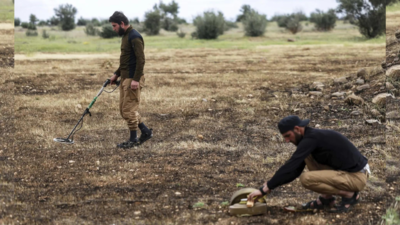Belgian Teenagers Plead Guilty to Trafficking Thousands of Live Ants in Kenya

This week, a Kenyan court witnessed a peculiar case involving four individuals, including two Belgian teenagers, who pleaded guilty to charges of trafficking thousands of live ants. The defendants, 19-year-old David Lornoy and his compatriot Seppe Lodewijckx, were apprehended earlier this month at a guesthouse situated near Lake Naivasha, a popular natural attraction renowned for its rich biodiversity.
The Kenya Wildlife Service reported that the teenagers were found in possession of a staggering number of live queen ants. These insects were meticulously packed in syringes and test tubes, which were specifically designed to maintain the ants' vitality for several months. This careful packaging highlights the lengths to which traffickers will go to ensure that their illicit cargo remains alive and healthy until it reaches its destination.
According to the court's findings, the value of the seized ants is estimated to be approximately $7,000. Intelligence reports indicated that these live ants were intended for exotic pet markets in regions such as Europe and Asia, where they are often sought after by enthusiasts and collectors.
This unusual case brings to light a disturbing trend that Kenyan officials have been monitoring closelywildlife smuggling is not limited to high-value species or traditional animal products. The increasing trafficking of smaller, lesser-known species, such as these ants, reflects a broader shift in the wildlife trade. The illegal wildlife trade has long been associated with the trafficking of larger animals and their parts, but as demand grows for more exotic pets, traffickers are turning to species that were previously overlooked.
Moreover, this incident is not isolated; there have been numerous reports of unusual wildlife trafficking methods. For instance, live beetles have been discovered hidden within snack packages shipped from Japan, and bits of live coral are increasingly being found smuggled through U.S. ports. This highlights a growing and concerning trend in the global wildlife trade, where the desperation for profit drives individuals to exploit a wider array of species.
As this case unfolds, it serves as a reminder of the ongoing challenges faced by wildlife protection efforts worldwide. Authorities are constantly adapting to new methods employed by traffickers, emphasizing the need for increased vigilance and stricter enforcement of wildlife protection laws.


























